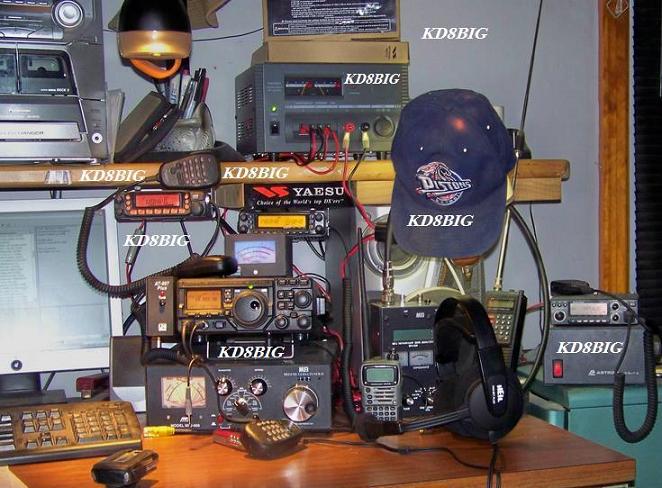April 17, 2009
Severe Weather:
Slight risk of severe weather for far eastern Arizona, western to central Texas, western Oklahoma, southeast Colorado, and southwest Kansas the to the 17th. Slight risk of severe weather for central to east southeast and far north Texas, western Oklahoma, and southwest Kansas the 17th to the18th.
Flooding:
Flooding likely, possible, or occurring in South Dakota, North Dakota, far northwest Minnesota, far northeast Wyoming, far southeast Montana, central west Illinois, south Mississippi, south Georgia, north Florida, Louisiana, and central east Texas to the 21th. (5.7 inches of rainfall for central east Texas, and southwest Louisiana).
Fire:
Critical fire danger for the northeast 1/3 of New York into New England, and far southeast New Mexico into central west Texas the 17th to the 18th. Moderate fire danger for Minnesota into Wisconsin, and central and southern Florida from the 17th to the 18th. Critical fire danger for southeast California, northwest Arizona, southern Nevada and southwest Utah the 22nd to the 24th.
AFGHANISTAN - Two moderate earthquakes have hit eastern Afghanistan, killing at least 19 people and destroying dozens of homes. The US Geological Survey says a 5.5-magnitude quake struck at 0157 local time (2127 GMT), followed by a 5.1-magnitude aftershock two hours later. The quakes struck in Nangarhar province, about 50 miles (80km) east of Kabul near the Pakistan border. At least two villages were reported to have suffered serious damage. Villagers told reporters that the death toll was higher.
Tropical Cyclone Bijli, with sustained winds of 50 mph, is located off the coast of Orissa, India and will slightly strengthen while tracking to the northeast along the coastline of Orissa, West Bengal, Bangladesh before making landfall in the vicinity of the Bangladesh and Myanmar boarder region on Saturday.
MADAGASCAR - Five more people were found dead in Madagascar after tropical cyclone Jade, pushing the death toll to 15. A further 22,900 people were also registered as homeless, bringing the number without shelter to over 60,800. The new deaths and homeless figures were reported in the northeastern district of Antalaha, where Jade made landfall on April 6. Officials had been unable to collect the data from the district because of rising waters in the area. The emergency management office also reported that 63 percent of Antalaha's coffee and vanilla crops, the region's key exports, were damaged. Three-quarters of subsistence crops and 65 percent of fruit trees were destroyed. Madagascar's cyclone season runs from November to April. In January, at least nine people were killed and more than 20,000 lost their homes after two cyclones hit the Indian Ocean island.
West Africa faces 'megadroughts' - DROUGHTS LASTING CENTURIES occur regularly in West Africa, scientists find - and another one is coming, climate change or not. Analysis of sediments in a Ghanaian lake shows the last of these "megadroughts" ended 250 years ago. Man-made climate change may make the situation worse. But the droughts are going to happen again anyway, and societies should begin planning for them. "It's disconcerting - it suggests we're vulnerable to A LONGER-LASTING DROUGHT THAN WE'VE SEEN IN OUR LIFETIME.." Droughts lasting a few decades appear to be linked to the Atlantic Multidecadal Oscillation (AMO), a natural climatic cycle in which sea surface temperatures in the tropical Atlantic Ocean vary over time. However, the cause of the longer, multi-century droughts is not clear. "That's one of the scary aspects - we have no idea what causes them." There appears to be a similarity between the outlook for West Africa and the southwestern portion of the US. There, research has also shown a history of shorter and longer droughts.
Pagan Volcano, Mariana Islands
Pagan volcano in the Mariana Islands erupted black ash and steam on 16th April. The Aviation Color Code for Pagan volcano was raised to Yellow. There are no monitoring instruments installed on Pagan. Monitoring is by satellite and ground observers. Pagan volcano is located 173 nautical miles north of Saipan. The island contains two stratovolcanoes connected by a narrow isthmus.
Kilauea Volcano, Hawaii
A magnitude 5.0 earthquake hit the south flank of Kilauea volcano on 14th April at 12:44 pm local time. The epicentre was 14 km south of the town of volcano, near Hilina Pali. Kilauea summit recorded weak deflation after the earthquake. In the past 25 years there have been 3 earthquakes over magnitude 5 in the same area of the volcano. There has been no change in eruptive activity at Kilauea volcano. Magma continues to degass through Pu`u `O`o Crater, and flow from TEB vent and the rootless shield complex through tubes to the ocean at Waikupanaha and Kupapa`u.










